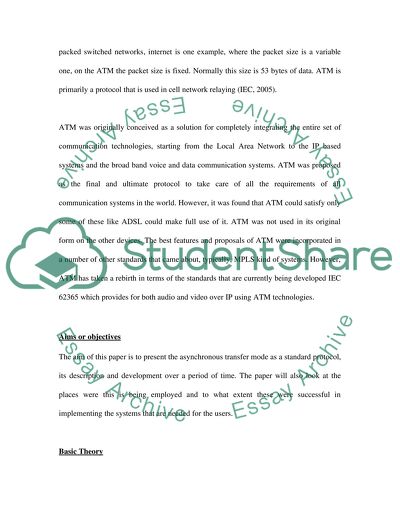Asynchronous Transfer Mode Description and Development Essay. Retrieved from https://studentshare.org/miscellaneous/1511613-asynchronous-transfer-mode-description-and-development
Asynchronous Transfer Mode Description and Development Essay. https://studentshare.org/miscellaneous/1511613-asynchronous-transfer-mode-description-and-development.


